Are you having trouble making the schedule for your employee shift? Are you having trouble finding a replacement when one of your employees can’t work on their schedule? Restaurant scheduling software could solve all your problems with one innovative solution.
Research about restaurant management systems stated that it is essential for restaurant operators to take proactive action to utilize RMS for their benefit. Within the fast-paced food service industry, utilizing RMS in a business operation could be a life changer for all business owners, helping to elevate the business to the next level.
Let’s dive into this article. We will discuss the 12 best restaurant scheduling software and how automated scheduling for restaurant employees could benefit your company and increase your business operation’s efficiency.
Key Takeaways
|
Table of Content
Content Lists

What is Restaurant Scheduling Software, and What Is Its Importance for Business?
Like restaurant management software, restaurant management and employees can use restaurant schedule software to establish, maintain, and communicate work schedules more effectively. It substitutes digital technologies that expedite and lower errors for manual scheduling methods like spreadsheets or whiteboards.
Using restaurant scheduling software is crucial because it can save time by automating much of the process, reducing manual scheduling work. With restaurant scheduling software, businesses can also avoid over- or understaffing by analyzing customer traffic patterns and predicting staffing needs, which cuts unnecessary labor costs.
Restaurant scheduling software aims to manage a more intelligent, leaner, and responsive business, not just create a calendar. Employee satisfaction is maintained, labor expenses and service quality are balanced, and managers have more time to concentrate on providing excellent cuisine and client experiences.
12 Best Restaurant Scheduling Software in Malaysia
Making optimal employee scheduling for restaurants can significantly increase consumer satisfaction and streamline operations for restaurant managers. You may want to take thought about the following options for Malaysian restaurant scheduling software:
1. HashMicro restaurant scheduling software
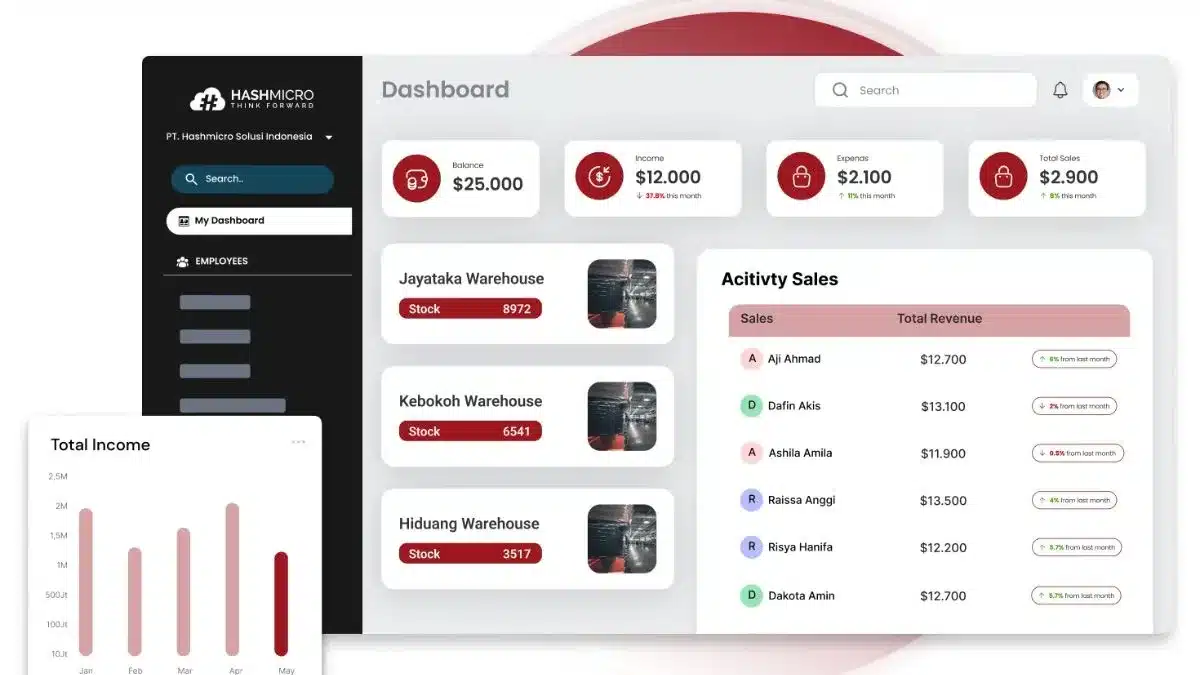
HashMicro offers complete restaurant scheduling software with the best central kitchen management system to boost profitability and operational effectiveness. In addition to F&B software, HashMicro provides a range of end-to-end solutions for over 25 sectors, including CRM sales, restaurant accounting software, and procurement management systems.
Another objective of this restaurant scheduling software is to improve the operational effectiveness of restaurants with numerous locations. Its excellent features make it easier to manage employee retention strategies and administer multiple branches, which lowers the possibility of mistakes and guarantees uniform service throughout the restaurant chain.
HashMicro’s restaurant software offers excellent features such as:
- Central kitchen management: HashMicro’s Central Kitchen Management feature guarantees a seamless flow and coordination of ingredients and produced foods. This centralization lowers operational inefficiencies and helps to maintain consistency across all outlets.
- Run rate automation to track the low material stocks: To ensure quick reorders and avoid stock-outs, the system sends management an alert when stock levels get close to a preset threshold.
- Restaurant reservation management: This technology streamlines the booking process, making it easier for the restaurant to serve customers, manage table availability, and reduce wait times.
- Multi BoM / recipe management: This feature allows you to keep your company secrets confidential and store and manage important recipes without worrying about information breaches. Precisely and safely documenting all ingredients and production procedures can help increase operational efficiency.
- Automated COGS based on recipe: The program automatically calculates the Cost of Goods Sold (COGS) using the recipes. Thus, restaurants may improve their financial management and pricing strategies to increase profitability.
- Centralized multi-branch POS: With automated data synchronization between branches, managers may view real-time sales, inventory, and Performance data for every branch from a single dashboard.
| Pros | Cons |
|---|---|
|
|
If you’re interested in learning more about how HashMicro Restaurant Management Software can improve your restaurant’s operations, click the banner below to see the pricing scheme.

2. Restaurant365 software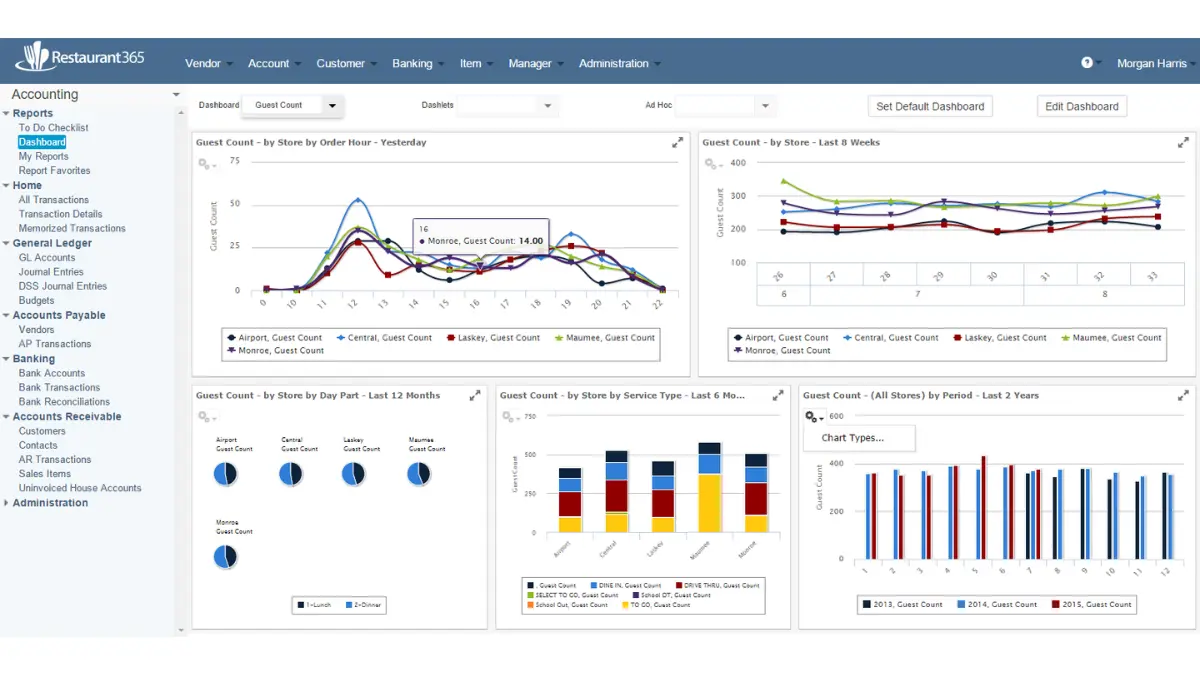
Restaurant365 is a comprehensive restaurant scheduling tool that combines accounting, operations, and inventory management into one platform. This software also includes strong analytics to offer insights into cost management, sales patterns, and general company success.
Here are the key features of the Restaurant365 restaurant scheduling software:
Key features:
- Invoice management
- Report and analytics
- Inventory management
| Pros | Cons |
|---|---|
|
|
3. Clover Network restaurant software
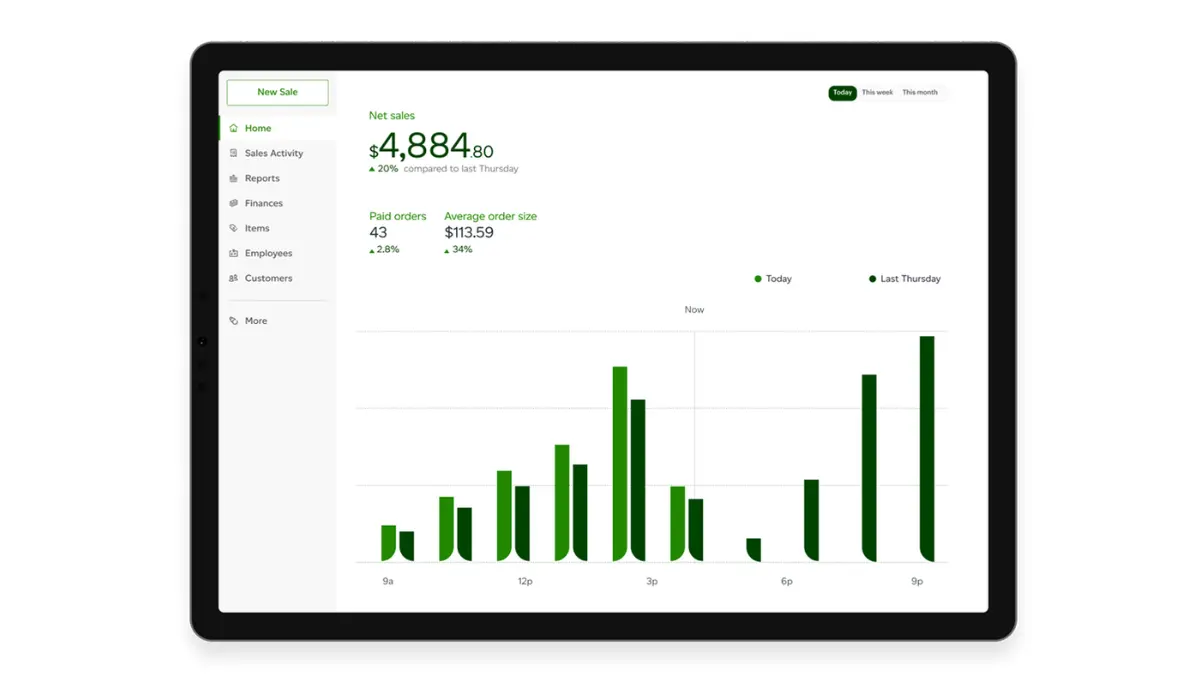
Clover Network is a flexible point-of-sale (POS) system used in full-service or quick-service restaurants. This software can be used in various restaurant environments because it has customer-facing displays, mobile point-of-sale devices, and configurable POS terminals.
Here are the key features of the Clover Network restaurant software:
Key features:
- Rating management
- Customer management
- Discount management
| Pros | Cons |
|---|---|
|
|
4. UpMenu restaurant software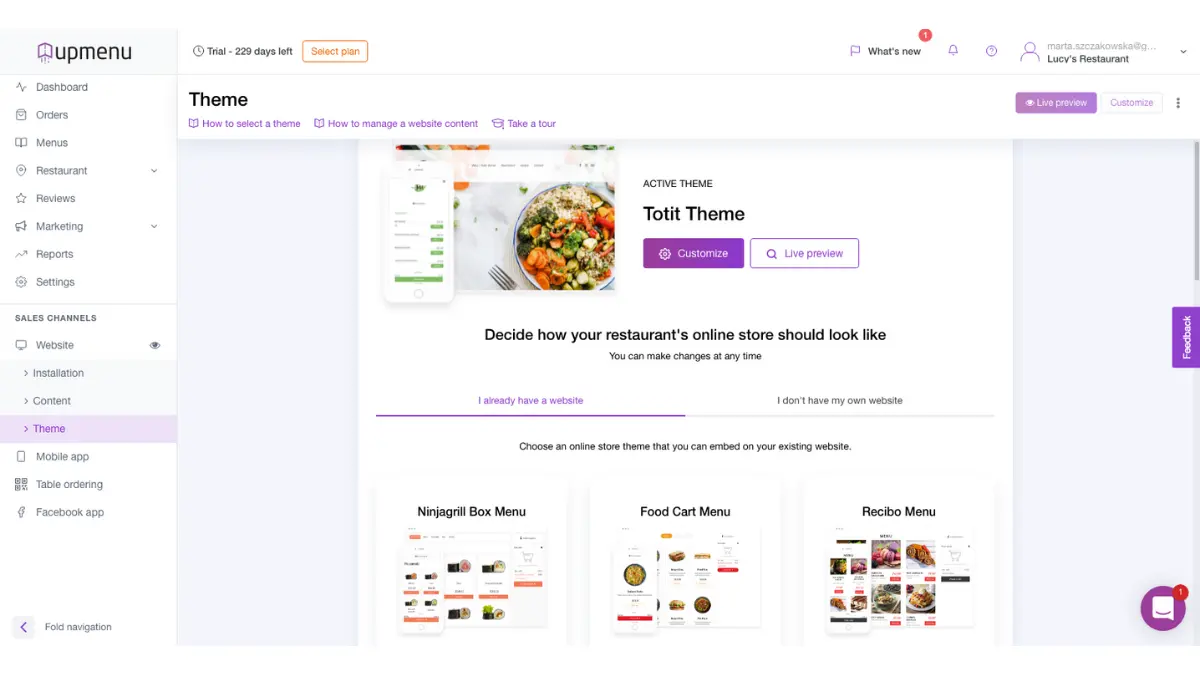
UpMenu is used to handle online meal ordering and delivery. It offers resources for organizing digital menus, processing online payments, and building customized websites. Through marketing tools, including email campaigns and loyalty programs, UpMenu aims to improve customer interaction and businesses’ online visibility.
Here are the key features of the UpMenu restaurant software:
Key features:
- Food ordering system
- Marketing tools
- Reservation system
| Pros | Cons |
|---|---|
|
|
5. Yodeck restaurant software
Digital software called Yodeck allows restaurants to design and control the visual information that appears on their screens. With its user-friendly interface and cloud-based platform that allows for remote display administration, this software is a practical choice for eateries trying to engage consumers visually.
Here are the key features of the Yodeck restaurant software:
Key features:
- Schedule menus
- Promote events
- Inform visitors
| Pros | Cons |
|---|---|
|
|
6. Sage Restaurant Software
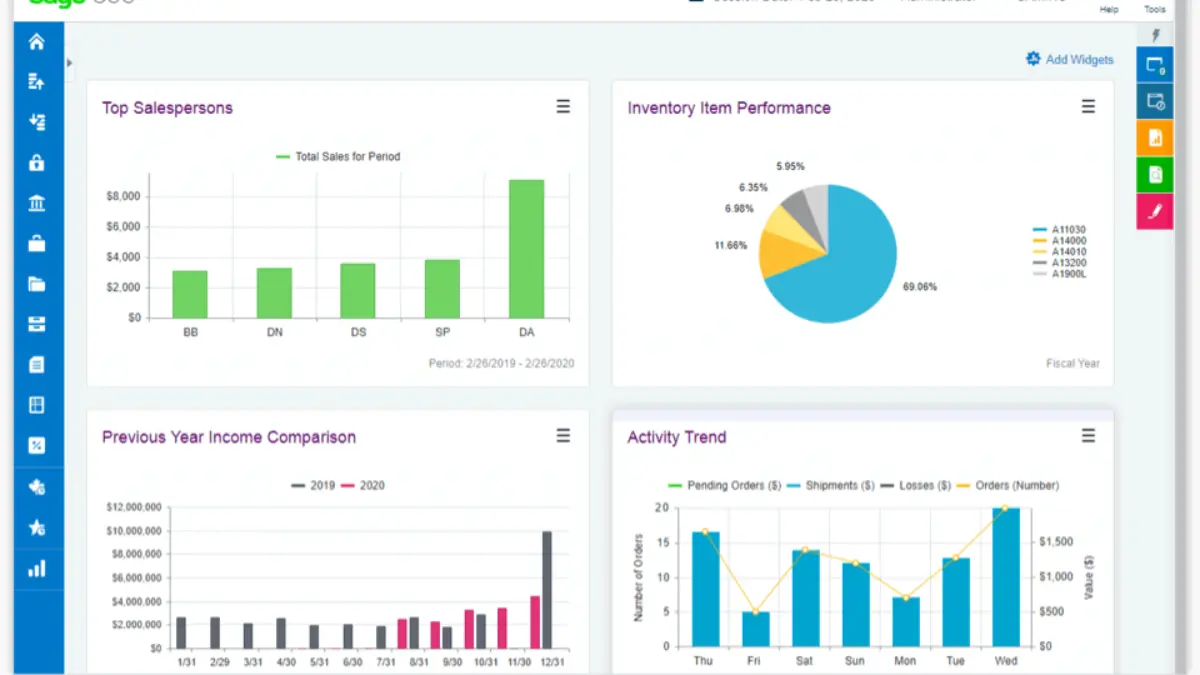 Sage offers complete company management solutions, including restaurant and hospitality-specific software. Sage’s restaurant management software can improve financial supervision and expedite operations.
Sage offers complete company management solutions, including restaurant and hospitality-specific software. Sage’s restaurant management software can improve financial supervision and expedite operations.
Here are the key features of the Sage restaurant software:
Key features:
- Simplify inventory management
- Sales and marketing Performance insight
- Automate finances
| Pros | Cons |
|---|---|
|
|
7. Safefood 360° restaurant software
 Solutions for food safety management and compliance are the main emphasis of Safefood 360°. The program lowers the risk of non-compliance and increases customer trust by assisting restaurants in implementing and upholding strict food safety requirements.
Solutions for food safety management and compliance are the main emphasis of Safefood 360°. The program lowers the risk of non-compliance and increases customer trust by assisting restaurants in implementing and upholding strict food safety requirements.
- Here are the key features of the Safefood 360° restaurant software:
Key features: - Management system
- Document control
- Supplier management
| Pros | Cons |
|---|---|
|
|
8. iFoodDS restaurant software
 iFoodDS focuses on quality control and food safety solutions for the restaurant business. Its software enhances service quality, helping restaurants boost their F&B business’s profitability.
iFoodDS focuses on quality control and food safety solutions for the restaurant business. Its software enhances service quality, helping restaurants boost their F&B business’s profitability.
Here are the key features of the iFoodDS restaurant software:
Key features:
- Quality Management
- Food Safety Software
- Traceability
| Pros | Cons |
|---|---|
|
|
9. Toast restaurant software
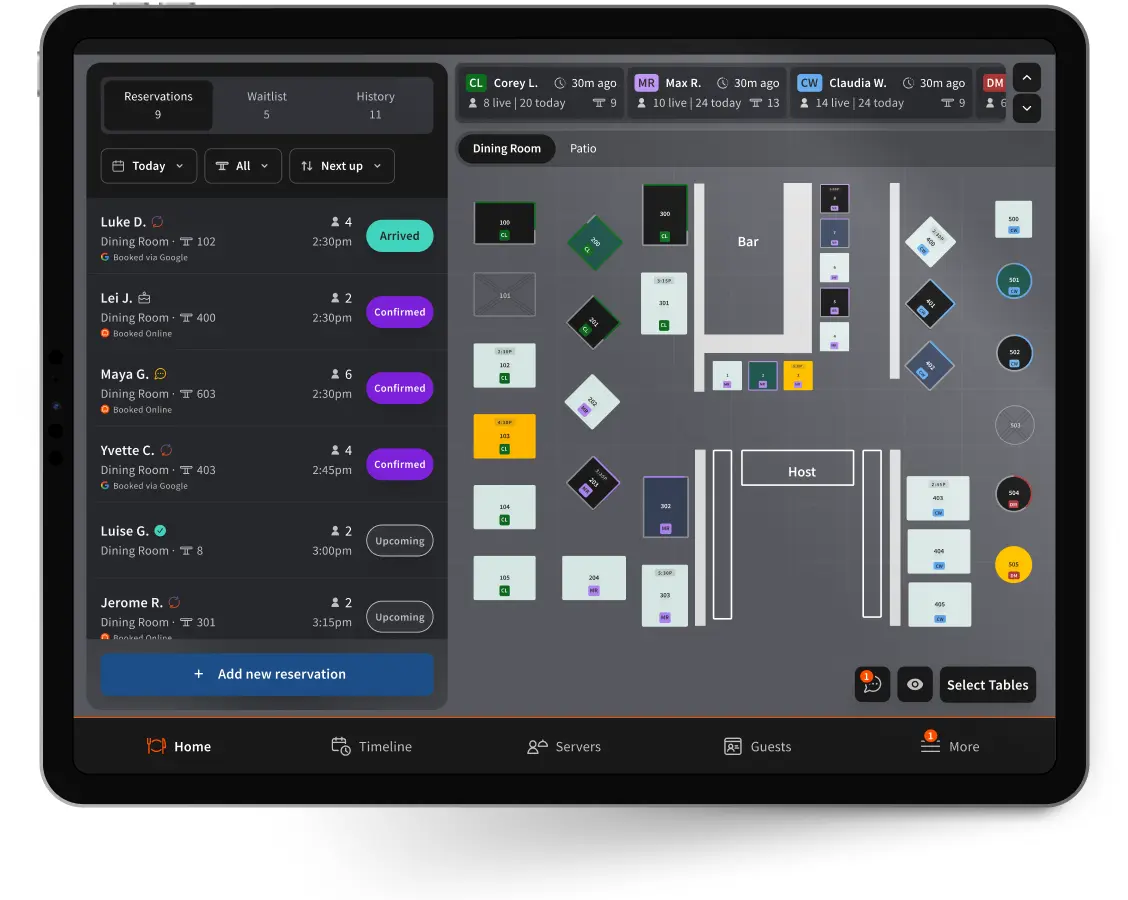 Toast is a comprehensive restaurant software platform known for its reliable point-of-sale system. Its integrated hardware solutions and mobile devices allow employees to collect orders and handle payments more effectively. Toast is a popular option for restaurateurs due to its comprehensive statistics and easy-to-use interface.
Toast is a comprehensive restaurant software platform known for its reliable point-of-sale system. Its integrated hardware solutions and mobile devices allow employees to collect orders and handle payments more effectively. Toast is a popular option for restaurateurs due to its comprehensive statistics and easy-to-use interface.
Here are the key features of the Toast restaurant software:
Key features:
- Payment processing
- Online ordering
- Email marketing
| Pros | Cons |
|---|---|
|
|
10. Xenia restaurant software
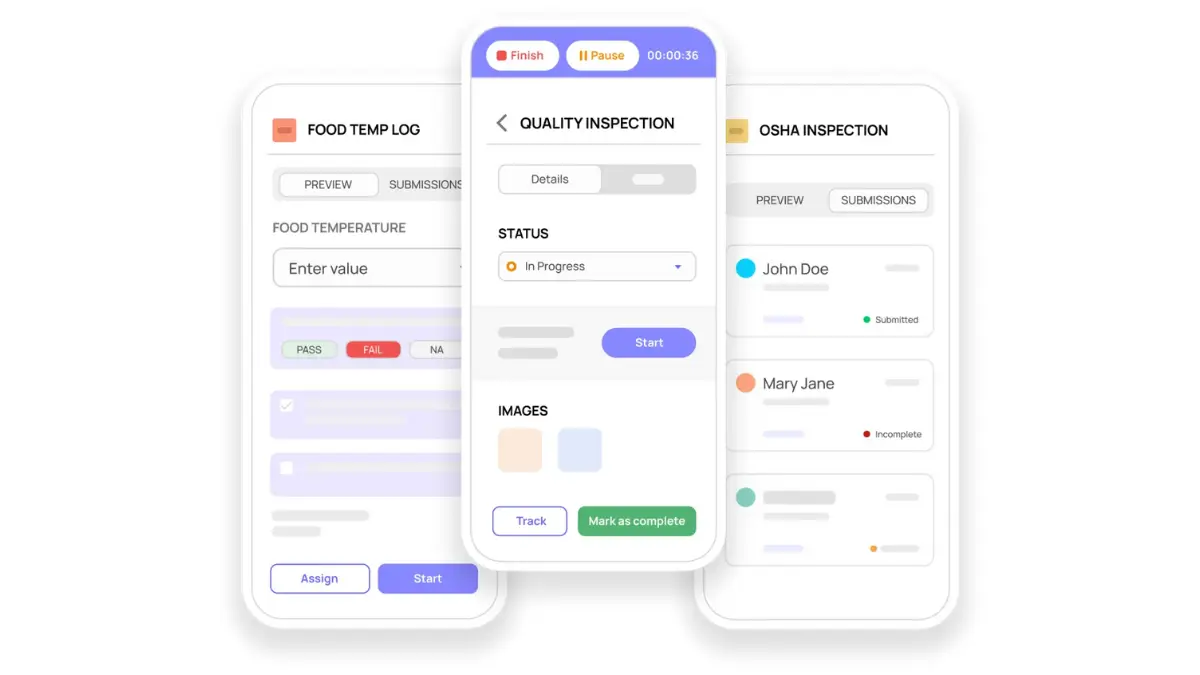 Xenia is a cloud-based platform for managing restaurants in Malaysia. Because of its emphasis on versatility and ease of use, it is appropriate for small to medium-sized eateries. Xenia’s mobile capabilities make real-time order progress updates and effective tableside ordering possible.
Xenia is a cloud-based platform for managing restaurants in Malaysia. Because of its emphasis on versatility and ease of use, it is appropriate for small to medium-sized eateries. Xenia’s mobile capabilities make real-time order progress updates and effective tableside ordering possible.
Here are the key features of the Xenia restaurant software:
Key features:
- Daily task checklist
- Preventive maintenance
- Team chat
| Pros | Cons |
|---|---|
|
|
11. Lightspeed restaurant software
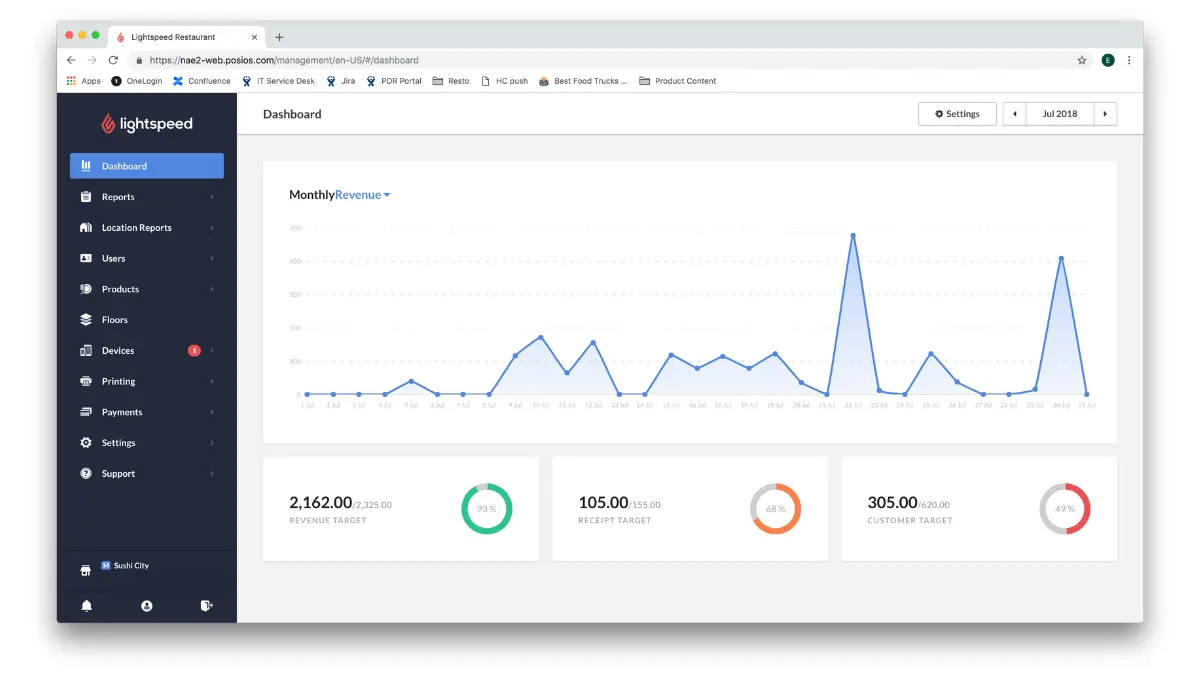 Lightspeed is a feature-rich point-of-sale and restaurant management system that provides features for inventory control, order processing, and customer service. For restaurants with multiple locations, accessibility and real-time data updates are essential, and comprehensive restaurant software with a cloud-based system guarantees these.
Lightspeed is a feature-rich point-of-sale and restaurant management system that provides features for inventory control, order processing, and customer service. For restaurants with multiple locations, accessibility and real-time data updates are essential, and comprehensive restaurant software with a cloud-based system guarantees these.
Here are the key features of the Lightspeed restaurant software:
Key features:
- Inventory management
- Accounting
- Kitchen display system
| Pros | Cons |
|---|---|
|
|
12. TouchBistro restaurant software
 TouchBistro was created to increase the effectiveness of service in pubs and restaurants. Its qualities can facilitate the process of running a restaurant. TouchBistro is incredibly easy to use and tailored to the unique requirements of the hospitality sector.
TouchBistro was created to increase the effectiveness of service in pubs and restaurants. Its qualities can facilitate the process of running a restaurant. TouchBistro is incredibly easy to use and tailored to the unique requirements of the hospitality sector.
Here are the key features of the Touchbistro restaurant software:
Key features:
- Kitchen display system
- Profit management
- Loyalty management
| Pros | Cons |
|---|---|
|
|
What to Consider When Choosing Restaurant Scheduling Software

Your restaurant’s success and seamless functioning depend on your choice of Restaurant Schdeuling Software. With so many possibilities, it’s important to consider several variables to ensure you select the finest software for your needs.
1. Security and compliance
Data security is crucial, particularly when managing payment and client information. Verify that the program conforms with industry norms and rules, such as PCI DSS, for processing payments. Strong security measures, such as encryption and frequent upgrades, guard against fraud and breaches involving your company and client data.
2. Integration capabilities
Restaurant software should work in synch with other systems that you either use now or intend to install. This covers third-party delivery services, payroll software, and accounting software. Effective integration guarantees consistent workflow, less duplicate information entry, and increased operational efficiency.
3. Cost and ROI
Examine the software’s price, taking into account setup fees, subscription fees, and any extra payments for maintenance or upgrades. Cost and anticipated return on investment (ROI) must be balanced. If the software significantly improves customer satisfaction, decreases waste, and boosts efficiency, a greater initial cost might be justified.
4. Features and functionality
The features of F&B software ought to be the main factor taken into account. Online ordering, loyalty plans, and thorough analytics are examples of advanced services. To properly streamline procedures, make sure the software addresses every aspect of your restaurant’s operations.
5. Customization and flexibility
Since every restaurant has different requirements, software that can be customized is a big plus. Seek out restaurant software that lets you customize user interfaces, reports, and features to meet your unique operating needs. Instead of making you follow a strict framework, flexibility in modification guarantees that the software fits your business model.
Conclusion
For your F&B business to succeed, selecting the best restaurant scheduling software is essential. The appropriate software can automate inventory control, order processing, and staff scheduling.
With this automation, you may increase productivity, decrease potential schedule conflicts, and obtain comprehensive business insights through real-time reports and analytics, enabling you to make more strategic and well-informed decisions.
HashMicro’s Restaurant Software is the best option for Malaysian businesses looking to streamline their processes and boost revenue. Its outstanding features include multi-BoM, recipe-based automatic COGS calculation, and central kitchen management, which gives you a competitive edge that can boost your company’s profitability while streamlining daily processes.
Learn more about HashMicro’s features that might enhance your business operations by scheduling a free demo today!

FAQ About Restaurant Scheduling Software
-
What is the most commonly used scheduling system?
Stream scheduling, also known as time-slot scheduling, is the most commonly used type of appointment scheduling. Customers choose from available time slots to schedule appointments with your business.
-
What are POS systems for restaurants?
POS systems for restaurants are tools that process payments and manage orders. Modern restaurant software integrates POS systems with features like menu customization and real-time sales tracking to enhance efficiency.
-
What is the restaurant management system?
A restaurant management system is software designed to streamline daily operations like order management, inventory tracking, and staff scheduling. Using restaurant management software helps improve efficiency and customer experience.




































